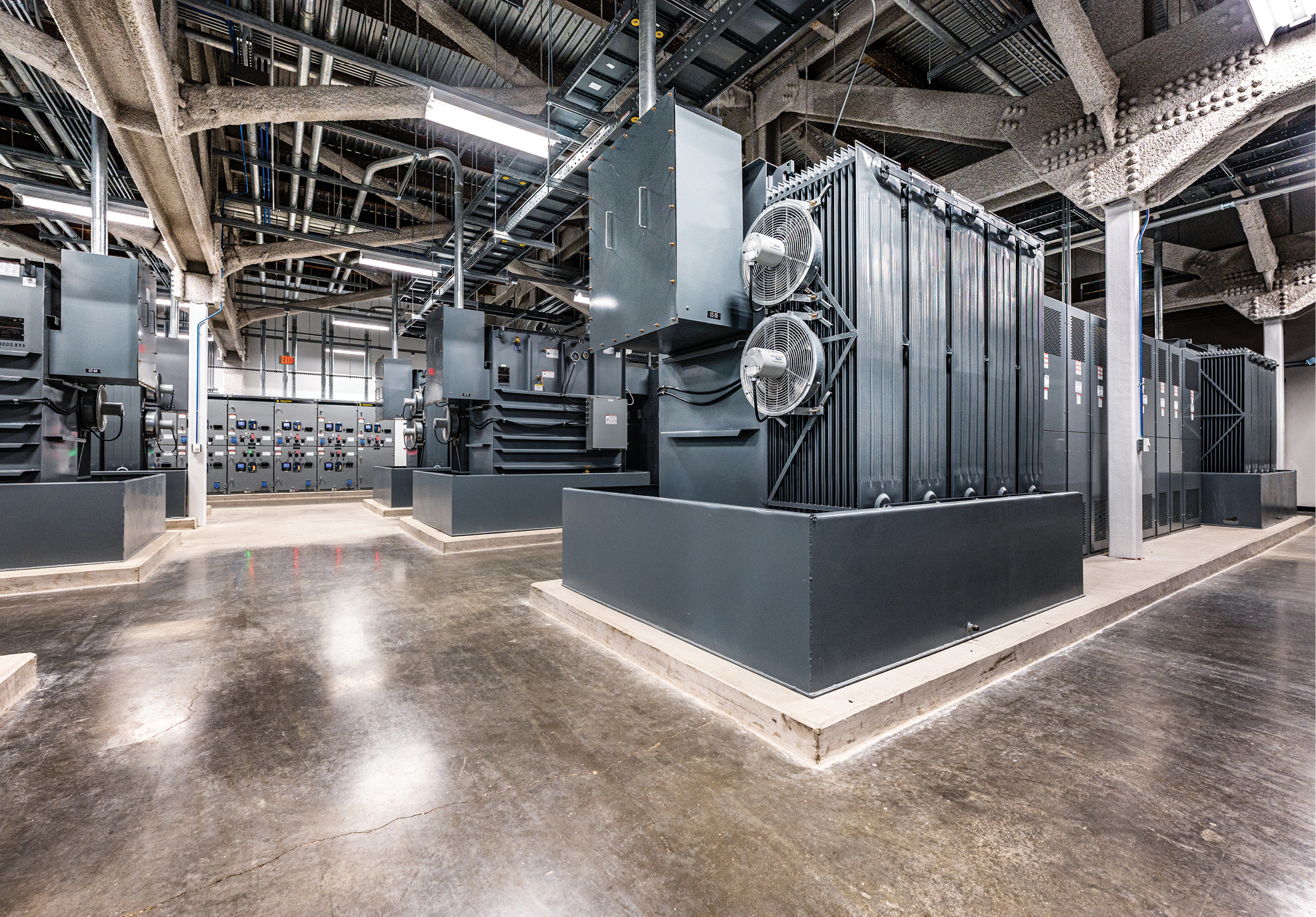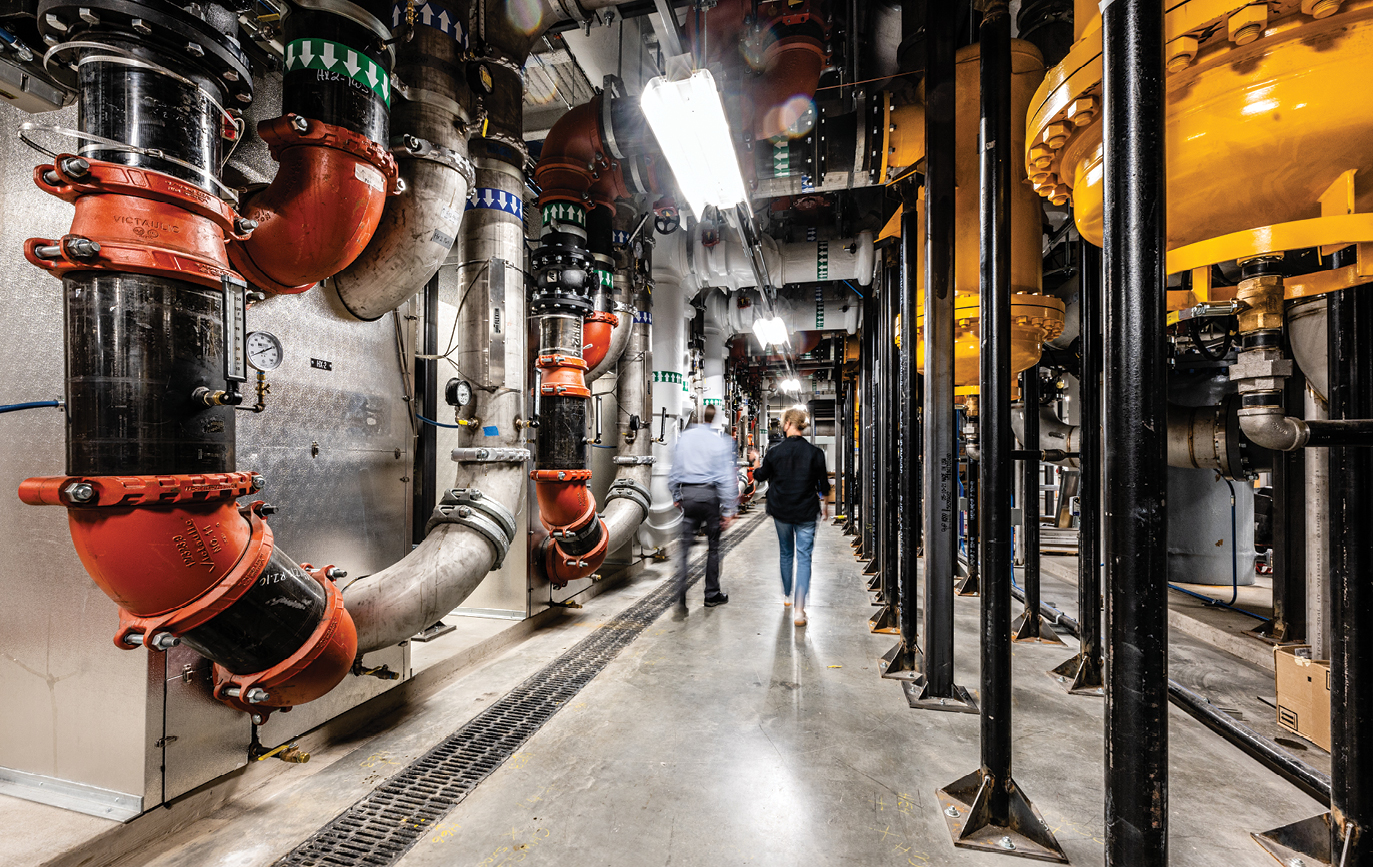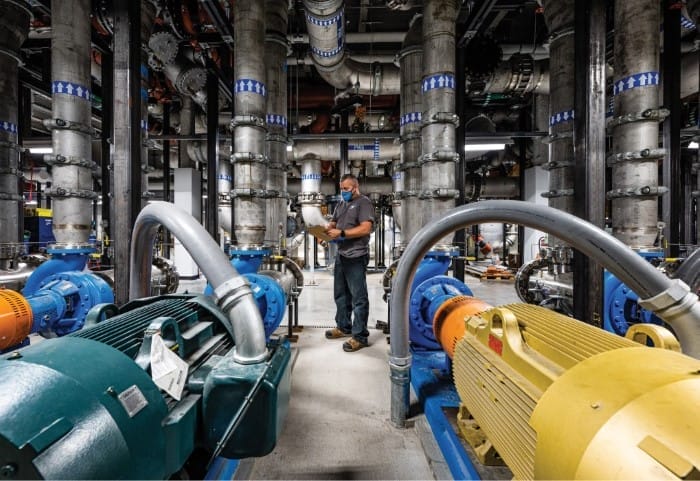What can a $500-million supercomputer do to help advance the next generation of research in artificial intelligence, data analytics and climate modeling? A lot, especially if that computer is the first and most powerful of its kind.
Welcome to Argonne National Laboratory in Lemont, Illinois, about 24 miles southwest of downtown Chicago. Here, a team of University of Chicago researchers and computer scientists are working to install the finishing touches on Aurora, a giant exascale supercomputer that is the result of a massive public-private initiative.
Built in partnership with Intel and Hewlett Packard Enterprise (HPE), Aurora is designed to seamlessly integrate the critical scientific tools of data analysis, modeling and simulation, and artificial intelligence.
The numbers are staggering. Aurora will be capable of delivering more than 2 exaflops of computing power — or 2 billion calculations per second. That is almost 50 times faster than Argonne’s current supercomputer, Polaris.
Summer 2023 marked a milestone for Aurora. That’s when workers at Argonne installed the 10,624th and final blade. Each blade weighs 70 pounds. Each of the computer’s 166 racks contains 64 blades. Aurora is so big that it takes up the equivalent of two pro basketball courts.
But it’s not just the size that turns heads; it’s the raw processing power. Aurora uses HPE Slingshot high-performance fabric. Some 220 petabytes of capacity are churned out by Aurora’s 1,024 strategic nodes.
Michael Papka, deputy associate laboratory director of computing, environment and life sciences at the Argonne Leadership Computing Facility (ALCF), says, “Construction has taken several years, as we needed to expand and update the data center at the ALCF to house the Aurora exascale supercomputer. Aurora is made up of rows of supercomputer cabinets that stand over eight feet tall. The cabinets are outfitted with more than 300 miles of networking cables, countless red and blue hoses that pipe water in and out to cool the system, and over 10,000 computer blades.”
Papka adds that “we will begin running early science research projects on Aurora this summer as we continue to make sure the system works as intended. We expect to fully open up to researchers around the globe in 2024.”
This one-of-kind computing system has already captured the world’s attention. On June 5, the University of Chicago announced a research partnership with Japan’s Tohoku University. The new Chicago-Tohoku Quantum Alliance will concentrate on several key fields of study, including quantum sensing, quantum communication, and new materials development.
Funded in part by a $100 million contribution from IBM and $50 million from Google, the University of Chicago is now spearheading an effort to advance the future of quantum computing technology.

The electrical room at Argonne National Laboratory in Lemont, Illinois.
SIU Meets Automotive
Skills Demand
Aurora may be the splashiest news on the university research front, but Illinois boasts a long and proud history of public-private alliances that bring the brainpower of academic institutions together with the builders of industry.
A case in point is the automotive technology program at Southern Illinois University. At SIU’s Transportation Education Center in Carbondale, students are trained in advanced automotive technology to meet growing demand for their skills in automotive design and manufacturing.
“I love that the Automotive Technology Program left me with a vast choice of opportunities not only in the automobile industry, but also in the off-road industrial market.”
— Matthew Ellickson, Customer Support Engineer, Power Solutions International
SIU offers one of just 12 automotive technology baccalaureate degree programs in the country, as well as the only one at a major research institution. SIU auto-tech grads are in such high demand that 90% of them will accept full-time job offers before graduation.
“We cannot produce enough graduates for the industry,” said Mike Behrmann, SIU program chair, in an article on the SIU website. Students work in all areas of automotive technology, including battery packs, transmissions and drivetrains, engines and electrical systems.
Matthew Ellickson says he owes his career success to the education and training he received at SIU. Employed by Power Solutions International as a customer support engineer, Ellickson says, “I love that the Automotive Technology Program left me with a vast choice of opportunities not only in the automobile industry, but also in the off-road industrial market.”

Aurora mechanical workers tour the facility.
Ellickson’s story is told on the SIU website. When asked what advice he would give to current and future students, he said: “Stay open-minded. Don’t get your mind set on working for one company or a certain position. I never thought I would be doing what I am now, but I have never been happier with my decision. Most of all, interview and intern with as many companies as possible.”
The folks at Power Solutions International are glad he did, and even happier that he now works for them.
Innovation Hub Coming to Edwardsville
That’s not the only success at SIU these days. SIU Edwardsville recently received a $2.3 million grant from the state of Illinois to create an innovation hub. Gov. JB Pritzker announced the grant as part of a $37.3 million initiative to establish five Illinois Innovation Network hubs around the state.
“Rebuild Illinois is not just about modernizing our roads and bridges,” the governor said. “It’s about building a future for generations to come that is economically prosperous with the promise of opportunity at every turn.”
SIU Edwardsville plans to use the grant to launch the Center for Sustainable Communities and Entrepreneurship (CSCE). Other schools receiving innovation hub grants are Northeastern Illinois University, Northern Illinois University, Southern Illinois University Carbondale and the University of Illinois Springfield.

